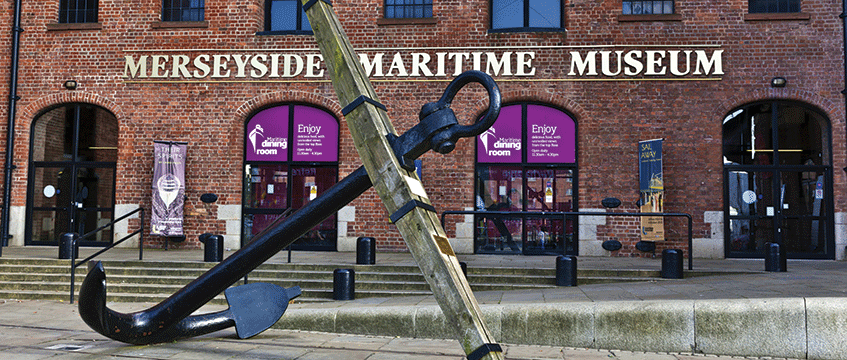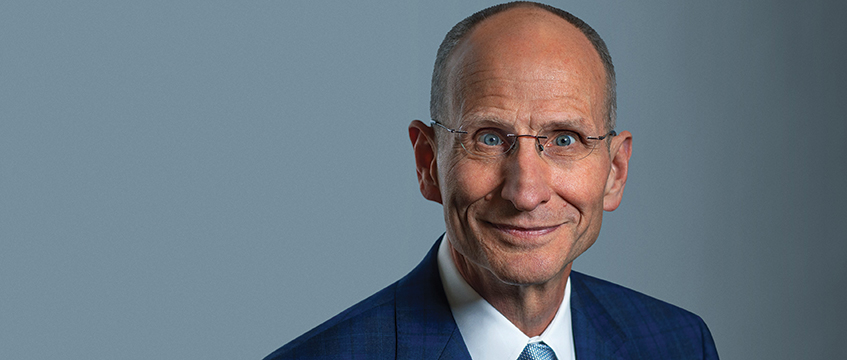The pulling power of museums
“ T h ere is something sticky about museums,” says Sara Wajid. The co-CEO of the Birmingham Museums Trust doesn’t mean that in a pejorative sense. She doesn’t mean difficult. She is talking about the sort of stickiness that is vital when you are trying to engage a community and revitalise a city. The ability to cleave a community to you with a loyal passion.
“There is something quite sticky about storytelling and making sense of your history,” she says. And it is this stickiness that is being harnessed to transform cities across the UK. In Aberdeen, Birmingham, Cardiff, Dundee, Edinburgh – you get the idea – museums are being seized upon as a potential anchor for regeneration.
Once the centrepiece of a revived city quarter would be a new retail scheme or an office hub. There might be nods to community heritage, a mural or preserved chunk of Roman wall, and perhaps some earnest attempts to incorporate a little culture. But behind the gloss the feeling was that if you created a shiny new place with some top-tier tenants offering needful things, people would come and the whole area would get incrementally better.
“There is something sticky about museums,” says Sara Wajid. The co-CEO of the Birmingham Museums Trust doesn’t mean that in a pejorative sense. She doesn’t mean difficult. She is talking about the sort of stickiness that is vital when you are trying to engage a community and revitalise a city. The ability to cleave a community to you with a loyal passion.
“There is something quite sticky about storytelling and making sense of your history,” she says. And it is this stickiness that is being harnessed to transform cities across the UK. In Aberdeen, Birmingham, Cardiff, Dundee, Edinburgh – you get the idea – museums are being seized upon as a potential anchor for regeneration.
Once the centrepiece of a revived city quarter would be a new retail scheme or an office hub. There might be nods to community heritage, a mural or preserved chunk of Roman wall, and perhaps some earnest attempts to incorporate a little culture. But behind the gloss the feeling was that if you created a shiny new place with some top-tier tenants offering needful things, people would come and the whole area would get incrementally better.
But as we have all witnessed over the past 18 months, those shops can fail. The trendy restaurants can close and the department stores that were once anchors for entire city centres can instead become dead weights. Pretty soon, those recently regenerated areas can start to look a little forlorn and unloved.
“I wouldn’t be snobby about shops, though,” Wajid insists. For every retail-led scheme that has failed there are many that have done wonders. “But shops are transactional by their nature.”
The problem is a lack of stickiness. Shops and offices simply aren’t sticky.
It’s a fair point. No matter how much retail attempts to enliven an area, or recreate itself with leisure and culture, the whole point about a shop is that you go there to buy something. Maybe you then go to the next shop, or for some lunch or to the built-in climbing wall, but then you leave. Shopping centres don’t tend to instil loyalty.
Done right, museums can do that. After all, as Renzo Piano once said: “A museum is a place where one should lose one’s head.”
In Birmingham, Wajid is working with an ambitious plan to revitalise the entire city. Her museum – or museums to be exact, she runs eight – is being charged with delivering the renaissance of a quarter of the city, centred on Digbeth.
Filling the Liverpool gap
In Liverpool something rather more organic is happening. National Museums Liverpool recently launched a competition for its masterplan of part of the city’s famous waterfront. As well as relaunching a number of defunct buildings and reviving derelict, but fascinating docks, the plan for the “gap” between Royal Albert Dock and Mann Island has the potential to reshape the entire city centre.
Director of estates Mairi Johnson is at the helm. “The location is the missing piece of the jigsaw, right in the bull’s eye of historic Liverpool.” By opening up the space around the Maritime Museum, Johnson will not only be able to provide a new entrance to an enlarged National Slavery Museum, but also open up new routes between the city centre and its waterfront.
The area will be transformed into one where you can stay all day, or pop in for a bite-sized culture hit. The scheme has to be commercially sustainable but it needs to be done cannily, she says. “You can’t just slap a shop on it.”
There are similar stories in many cities, but this is not to say that museums are the answer to every failing metropolis.
For a museum to be successful as an anchor to regeneration it must do two fundamental things. Firstly, it must make the most of the rich heritage of the communities that surround it.
“It is about responding to where you are,” says Wajid. “The question is: can you plant yourself in interesting soil?”
“Planting” is another good image. Previous attempts at using museums or culture to regenerate cities have been not so much planted as dropped. Around the millennium there was very much an “if you build it they will come” attitude to arts-led regenerations. Now things are different. There are fewer trophy buildings being thrown up by rockstar architects, unlike the heady days of the Noughties when every city wanted to be the next Bilbao.
Even so, museums can easily find themselves on the wrong side of gentrification.
“The trickle-down model has been shown to be really flawed,” says Wajid. If it is disconnected from the community around it the project could fail, leaving yet another empty building and an even greater need for regeneration. Worse still, it could be a huge success, but in isolation from its community, leading to that most toxic form of regeneration – yuppification.
“An ethical project should be savvy,” Wajid explains. “You can’t just helicopter in a shiny treasure.”
Sometimes the results can be surprising. Middlesbrough was seen by many as a strange choice for a Museum of Modern Art, but it works. The question is, Wajid says, “how much is it a mirror or a lamp?” After all, Middlesbrough works because it is less concerned with cultural tourism than it is with getting the locals turned on by art.
And this leads to the second fundamental. In order to be successful, the museum must engage with its communities on a level they have previously not experienced.
Community is key
In Liverpool, that is woven in to Johnson’s thinking. The level of community involvement in every stage of its plans, especially with relation to the National Slavery Museum, is, as far as she knows, unprecedented.
The communities will be involved at every stage, informing every decision, to a far greater extent than the lip-service offered elsewhere.
“That really is something new,” she says. “What we have is an idea of what can’t be done, for heritage reasons. We want the communities that are most affected to tell us what we should do.”
That means creating something that speaks to the sort of people who don’t normally go to museums. “We achieve very little when we focus on the Radio 4 listeners and opera-goers,” Wajid says with the curl of a smile.
Speak only to them and a museum-led regeneration quickly becomes the wrong sort of gentrification. Wajid is deeply aware of the danger. Many of the cultural creatives in Birmingham – part of the rich soil that Wajid wants to till – are there because they have been priced out of London. It would be the height of folly to repeat the same mistake while trying to harness them as an asset.
In fact, in London, the City Corporation is now trying to reverse the process that drove the artists out in the first place.
[caption id="attachment_987149" align="aligncenter" width="847"] The Museum of London will sit at the heart of the Culture Mile[/caption]
Its recent Future City document built on its plans for a culture mile, putting the relocated Museum of London at the heart of an attempt to drive footfall and reengage communities.
“Culture Mile, supported by the new Museum of London, will be at the heart of the City’s recovery, helping us to tell a confident and inclusive story of the next chapter of the City of London,” says the Corporation’s policy chair Catherine McGuinness.
“And we’re developing new creative areas,” she adds, “including pop-up gardens and new outdoor spaces, and exploring how we can use empty retail and offices creatively.”
Indeed, in the most stark reversal of the tides of capitalism, plans are now afoot to redevelop some of the Square Mile’s office space as flats for artists.
Wajid knows all this all too well. Until late last year she was the head of engagement for the Museum of London’s new premises. The lessons learnt there were crucial.
“We would speak to people in council flats about what we were planning in Smithfield [where the new museum will be] and they’d say ‘that’s really nice but what I need is a care home nearby.’”
Deliver the “sticking” factor
From the start everyone involved in the regeneration, from the city planners to the museum curators to the fund managers, must be absolutely aware that the project lives or dies with those people. Convince them that you have something sticky, and you’ve won the game.
“We have to be like William Morris,” she says. “We have to throw ‘everyday people’ into the vector of cultural capital.” Wajid recalls her own transformative experience as a child of immigrants discovering the “vast playground” of the Natural History Museum. It helped her develop a connection between herself and a “Harry Potter version of Englishness”, as well as “the mind-blowing, huge, blue whale hanging from the ceiling”.
“You have to do something for the people for whom it is a transformative experience.”
She draws a parallel with the Smithsonian’s Museum of African American History and Culture in Washington, which draws in 2m visitors a year, a third of whom have never visited a museum before. Most will visit again.
That level of community engagement and “stickiness” is hard to generate, unless you are a park. (“Museum people dribble over parks,” Wajid confesses.) And the potential of museum-led regeneration is enormous. But it is not magic. “I’m not going to say museums are unique,” says Wajid. “It would be naive to over-romanticise.”
Engaging with communities to deliver regeneration is nothing new. And for museums, reaching out to new audiences is now the orthodoxy. “All museum directors will all give you the same blether,” Wajid smiles. “The difference is how you deliver on the rhetoric.”
It is in the delivery that things can get sticky. And not in a good way.
Main image © Debu55y/Shutterstock











